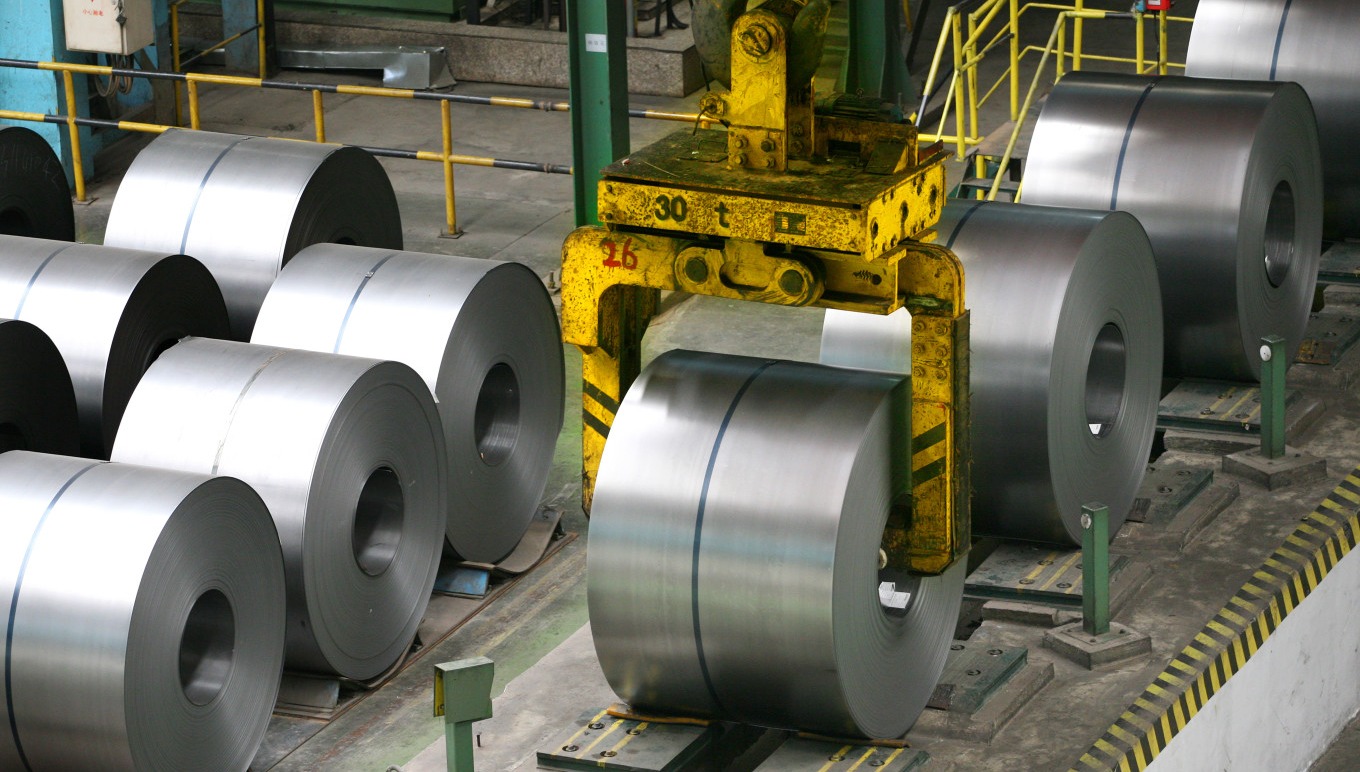in 1950 to 22 percent in 1975. Industrialized, developed producers, other than the United States, have become increasingly active in interna...
in 1950 to 22 percent in 1975. Industrialized, developed producers, other than the United States, have become increasingly active in international trade. A strong export position can be an important indicat ion of a country's competitive position. The role of the leading steel producers in the world market is =~ clearest from the absolute export levels given in table 2.2. The ten countries shown in table 2.2 together account for 75 to 80 percent of total world trade. The ~~ad& analysis shows ('2 that Japan has become the leading steel exporter by a considerable margin. In 1974, the EC's market share of total world steel exports (including intra-EC trade) was 46.7 percent; Japan held 25.7 percent, and the U.S. stood well behind with l percent. Foreign trade plays a much more important role in other nations than in the Un i ted States. The impor tance of the U. S. in the world steel industry lies mainly in the size of its domestic market rather than in an overwhelming share of world exports. The large market of the United States has become a favorite target for other countries. -9- TABLE 2.3 Trends in Raw Steel production by Major Non-Communist Steel Producing Countries: 1960 and 1974 Production (million metric tons) Percent Average annual Country 1960 1974 change _ !.~~
growth (percent) Un i ted States 93.3 132.2 41. 7 2.52 ... . -. Japan 21.8 117.2 . 437.6 12.76 West Germany 32.9 53.2 61. 7 3.49 Italy 8.1 23.9 195.1 8.03 Fr ance 17.2 27.0 57.0 3.27 Un i ted Kingdom 24.7 22.4 -9.3 -.70 Belgium 6.9 16.2 134.8 6.28 Luxembourg 4.0 6.5 62.5 3.52 Source: International Iron and Steel Institute. \ -12- \ Rates of growth among the major national producers provide another important basis for evaluating the relative standing , of the United States among the world's steel producing nations. Table 2.3 provides a breakdown by country of the tonnage and percentage changes for eight non-communist steel producing nations in 1960 and 1974. Japan showed an amazing 437 percent increase in output over this time, or an annual rate of 12.76 percent. Luxembourg, France, and West Germany all had modest ...".
-.- annual rates of growth from 3.27 to 3.52. The world steel market is subject to wide cycl ical fl uctuations. This is attributable to the sharp responsiveness of steel demand and output to the fluctuating nature of the various markets which it serves. These ups and downs have caused the industry to alternate between periods of excess capacity and shortages of capacity. ~/ The intensity of competition in the world market at any given time is determined by the demand fluctuations in the major producing countr ies. Concurrent demand cycles might cause the price of imported steel to fluctuate widely. When the worldwide demand for steel is high, customers increasingly accept shipments of , .. lower quality steel which would have been rejected when supplies were more abundant.

No comments